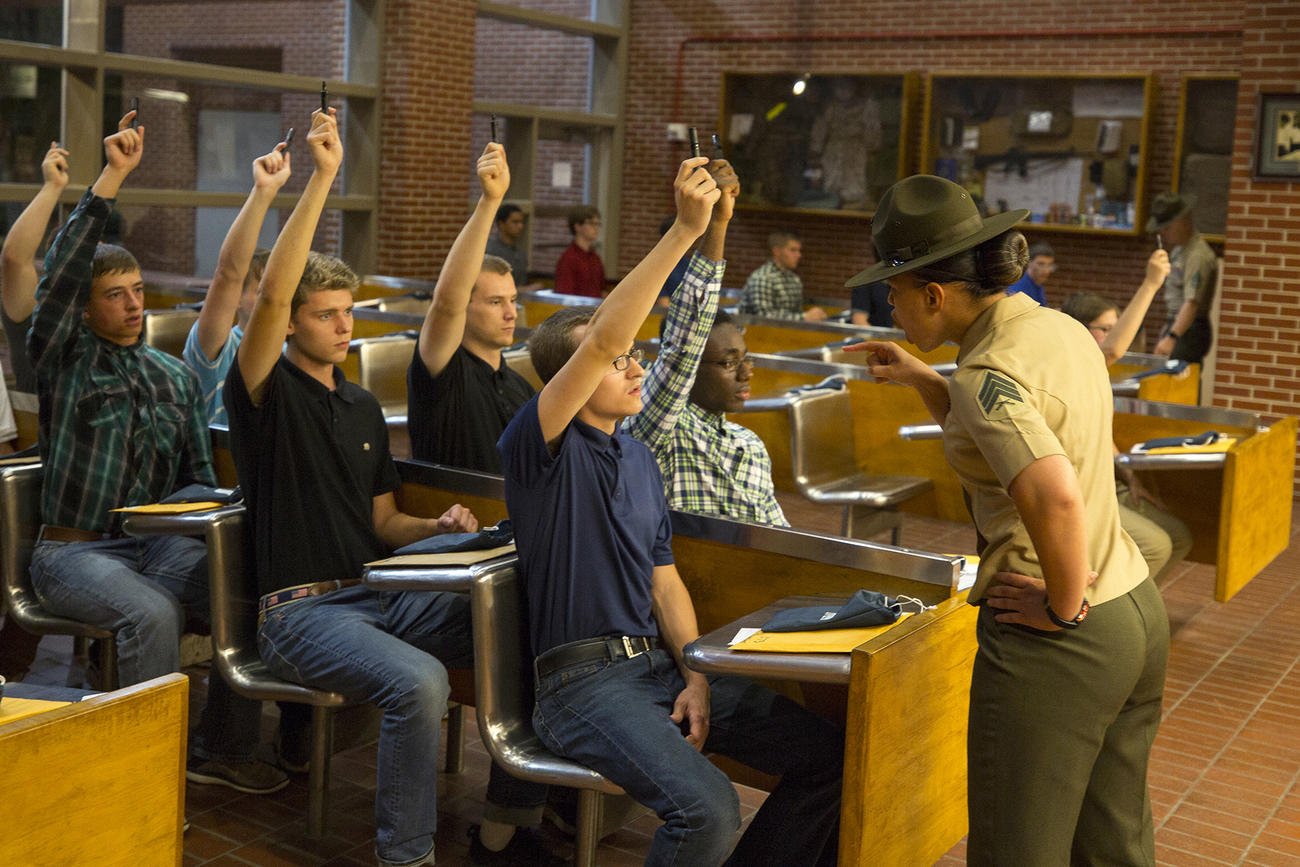

A generation ago, the smoldering wreckage and public anger over the 9/11 attacks drove young Americans into military recruiting stations in the days and months after the worst attack since Pearl Harbor.
“After 9/11, so many people were walk-ins,” said Col. James Welch, commander of the Army‘s 2nd Recruiting Brigade.
But two decades later, many new recruits have no memory of the attacks, and the Afghanistan withdrawal and winding down of operations in Iraq leave limited combat opportunities. Those signing up today are more interested in benefits and economic security than taking it to terrorists overseas, according to recruiters.
The military has largely shifted back to pre-9/11 recruiting pitches of service as a career that can teach technical skills and provide GI Bill benefits as the legacy of the attacks fades among young troops and loses its power as a recruiting tool.
“As we reflect on 20 years of combat, it’s hard to realize we have soldiers coming in that weren’t even alive on that day [of the attacks in 2001],” Sergeant Major of the Army Michael Grinston said in an interview. “I even ask young soldiers sometimes why we were in Afghanistan, and sometimes they can’t clearly articulate it.”
Read Next: Slowing Housing, Food Allowance Raises Could Save the Pentagon Billions, Congressional Report Says
Recruiters interviewed by Military.com said benefits are the bottom line for most enlistees these days, and research backs that up. Several studies, including a 2018 survey from Rand Corp. on junior enlisted, found economic factors, including job security, pay and benefits, are the leading reasons people join the military.
“It’s back to where we were at pre-9/11 where people want to serve for experience, training and college tuition,” Welch said.
On paper, the 9/11 attacks didn’t appear to cause a spike in recruiting that same year. Five thousand more recruits actually signed up with the Army a year earlier. The number increased 3,749 to 79,604 in 2002, but enlistments rose above 80,000 in 2006 and 2007 as the Iraq War escalated and the Bush administration surged forces.
In 2018, the Army missed its recruiting goal for the first time in more than a decade and blamed a war-weary public. That largely marked a transition to the career-focused recruiting style that had been common in the ’90s.
The allure of combat with special operations forces is still a draw. But for the generation after 9/11, the military is seen as an avenue to guaranteed health care and cheap college, along with other benefits such as generous home loan opportunities, straight out of high school.
Those benefits have always been a big draw for recruiting, especially during times of relative peace. A Rand study in 2001 had the same findings as the one in 2018 — in that today’s recruits share more with generations that came before the 2001 attacks.
“We wanted to serve at the time, but it wasn’t about being forward deployed [to a combat zone],” said Grinston, who enlisted in 1987. Combat “wasn’t something that you were aware of, it wasn’t something real.”
Smarter with Better Gear
The new crop of recruits from Generation Z is different in another way from the post-9/11 generation. They grew up with the internet, are the most educated and the most ethnically diverse and largest generation in American history.
The military has publicly lamented that an estimated 70% of Americans are ineligible for service, mostly due to obesity, criminal records or lack of a high school education. But those who are eligible may be of a higher caliber.
“When I showed up to 3rd Group, there were still some Vietnam guys running around; they were as hard as you could be. They were legends,” Chief Warrant Officer 4 Michael Woods, who has been in the Army since 1993 and serves in the 3rd Special Forces Group, told Military.com. “But we were smarter, and our gear made us better.”
Newcomers to the special forces community are also smarter and more physically fit than his generation, Woods said. Instead of a single or handful of computers issued to a unit, everyone in an office has two. Night-vision optics are now obligatory on any packing list, but back when Woods joined, he said there weren’t enough to go around.
Woods said the days of relying solely on running and ruck marches for physical fitness are long gone. Now, it’s holistic health, including nutrition, smarter workouts that incorporate CrossFit-style exercises, traditional weightlifting, stretching, yoga and physical therapy.
“It’s just way ahead of what we had, and now when people get hurt, they go through rehab, they last longer,” he said.
— Steve Beynon can be reached at [email protected]. Follow him on Twitter @StevenBeynon.
Related: What Schools Teach About 9/11 and the War on Terror
© Copyright 2021 Military.com. All rights reserved. This material may not be published, broadcast, rewritten or redistributed.
